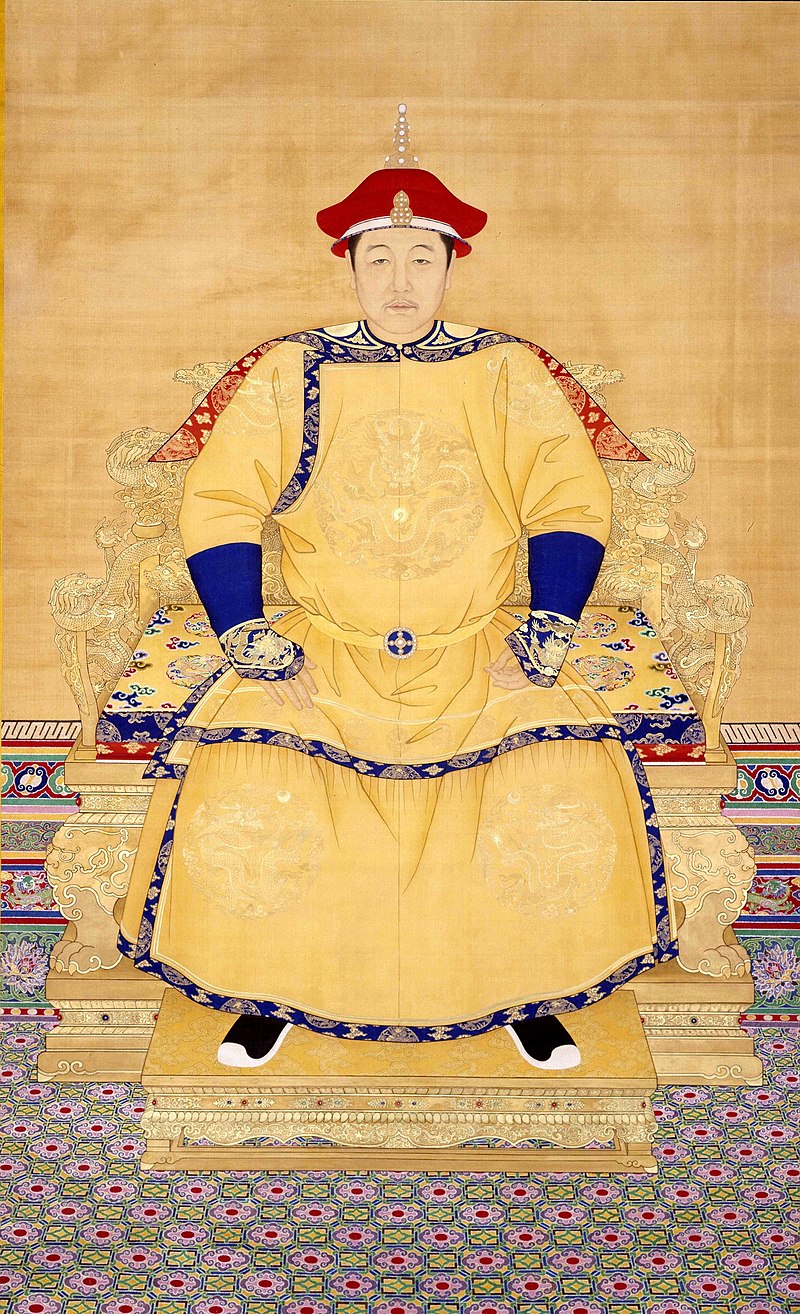
Emperor Shunzhi (15 March 1638 – 5 February 1661), temple name Shizu of Qing, personal name Fulin, was the second emperor of the Qing dynasty and the first Qing emperor to rule over China. He was the ninth son of Abahai, a great ruler of the Manchu kingdom in Manchuria. He was chosen by a committee of Manchu princes to succeed his father in September 1643, when he was five years old, during the regency of Dorgon, his father's brother. Under Dorgon's leadership, the Qing army captured Beijing, the former capital of the Ming dynasty (1368–1644), and the young the ruler was proclaimed emperor of the Qing dynasty of China as Shunzhi. Dorgon exercised full power until his death in 1650, after which the young Emperor Shunzhi began to rule personally. He tried to fight corruption and reduce the political influence of the Manchu nobility with mixed success. In the 1650s he faced a resurgence of loyalist resistance to the Ming, but by 1661 his armies had defeated the last of the Qing's enemies. Emperor Shunzhi was a kind man who was heavily influenced by eunuch officials and Buddhist priests. His main achievement was to increase the number of Chinese in the Manchu government. Emperor Shunzhi died of smallpox at the age of 22. He was succeeded by his third son, who took the throne as the Kangxi Emperor and ruled for sixty years.
Emperor Shunzhi (1638-1661) was the first ruler of the Qing Dynasty. During his reign, China's financial system underwent a major transformation. The coinage system of the previous Ming dynasty had become obsolete and corrupt, and the emperor decided to introduce a new system. Emperor Shunzhi's first financial reform took place in 1644. It was then that he introduced the "Chinese Big Money" (大清通宝), which was a new silver-based money. The Big Money was divided into 100 jiao, and each jiao consisted of 10 fen. The Big Money was officially introduced in 1645 and quickly spread throughout China. In addition to the introduction of the Big Money, Emperor Shunzhi also implemented many other financial reforms. In 1647, he introduced the "Chinese Small Money" (大清小平钱), which was a smaller copper-based money. Small money was officially introduced in 1648 and was mainly used for daily purchases. The financial reforms of Emperor Shunzhi contributed significantly to the establishment of financial stability in the Qing Dynasty. The introduction of Big Money and Small Money unified the monetary system in China and helped to reduce corruption. The minting of Big Money and Small Money continued during the reign of Emperor Shunzhi. The minting of the Big Money continued until 1661, and the minting of the Small Money until the end of the Qing Dynasty, until 1911.
Numismatics. Online store for old money, coins and banknotes.